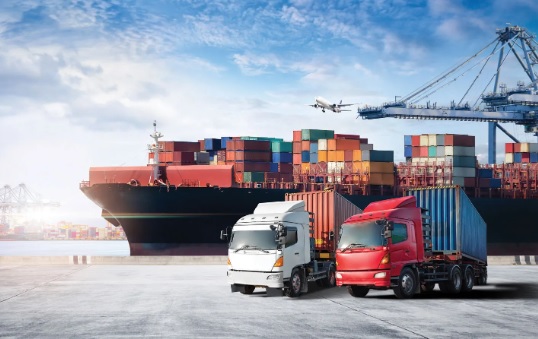| (Mains Exam, General Studies Paper- 3: Conservation, Environmental Pollution and Degradation, Environmental Impact Assessment) |
Context
At the core of the vision of a developed India by 2047 is inclusive growth that ensures that development reaches every citizen, every business, and every sector. This requires an efficient and scalable logistics network, from seamless supply chains to last-mile connectivity.

Carbon Emissions by India’s Logistics Sector
- Infrastructure, efficiency, and access are critical to an inclusive logistics sector. Also, the environment and its priorities are essential to build a future-ready, resilient logistics network.
- India’s logistics sector is currently the most carbon-intensive in the world, accounting for around 13.5% of the country’s total greenhouse gas emissions.
- According to the International Energy Agency’s 2020 report, road transport accounts for more than 88% of India’s logistics sector emissions.
- Domestic aviation contributes around 4%.
- Coastal and inland shipping add to the emission burden but it is much less than road freight.
- As the country moves towards net zero carbon emissions by 2070, it is imperative to reduce transport, warehousing and supply chain emissions.
Reformative approach needed
Government policies envisage rapid expansion in freight and passenger traffic on inland waterways and coastal shipping cargo movement by 2030. This growth is a great boost to economic momentum while also maintaining scalability and sustainability goals.
Rail Transport
- Countries like China and the US are successfully shifting freight transport from road to rail as rail freight significantly reduces emissions compared to road transport.
- India should focus on increasing the share of railways in freight transport to reduce emissions and improve efficiency.
- Electrification of rail routes can make it a more sustainable, near-zero carbon mode of transport.
Road Transport
- A focused structural change is needed to make road freight transport cleaner. The Union Ministry of Road Transport and Highways has announced the installation of overhead electric wires on highways to power electric trucks.
- In this regard, the first pilot project on the Delhi-Jaipur corridor can be a breakthrough in reducing emissions from freight transport while ensuring high efficiency and economic viability.
Water Transport
- Coastal shipping and inland waterways have immense potential for decarbonisation. The International Maritime Organisation (IMO) aims to cut global shipping emissions by 50% by 2050 compared to 2008 levels.
- To achieve this, the shipping industry is being encouraged to adopt cleaner fuels such as ammonia, hydrogen, LNG, biofuels, methanol and electricity.
- India can accelerate its green transition by introducing LNG-powered ships, solar-assisted, electric or biofuel-powered boats. These emission-cutting steps can keep freight efficient and sustainable.
Air Transport
Decarbonisation in air transport presents a huge challenge due to its high reliance on refined fuels. However, advances in sustainable aviation fuels and efficiency improvements in other transport modes can help offset emissions.
Warehouse
- Warehousing remains a major source of carbon emissions due to its high energy consumption.
- Adoption of renewable energy sources such as solar, wind and geothermal power can significantly reduce the carbon footprint of warehouses.
Conclusion
- Decarbonization of India's logistics sector is about reducing emissions as well as building a more competitive, resilient and future-ready industry.
- By increasing rail freight, electrifying road transport, adopting clean marine fuels and making warehouses more energy-efficient, India can build a high-performing logistics network with low environmental impact.
- The focus is on paving the way for the country to create a cleaner, greener and more efficient logistics ecosystem with the right policies and investments.




